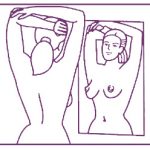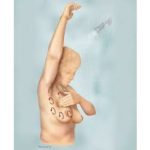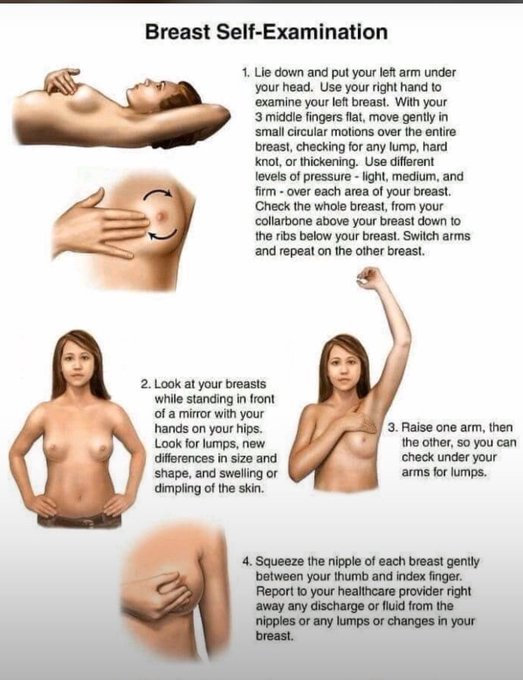Dr Olufunmilayo writes on breast self examination steps, indication of breast self examination, health education for self breast exam, causes of breast cancer, and prognosis of breast cancer.
Enjoy reading👇
Breast lumps
Breast heaviness
Breast skin changes
Excessively unequal breasts
Unusual breast discharge
Armpit lumps Weight loss.
Non healing ulcers on breasts.
Sudden Nipple changes.
ALL these are signs and symptoms of breast cancer- in men and women.

Admittedly, breast cancer is commoner in women- but it also happens in men- especially if there’s people in the family who have had breast cancer or some other forms of related cancers.
But for both men and women, the biggest emphasis is on Breast Self Examination.
To do a BSE:
First of all, Medical research show breast cancers are more common in black women, in their forties or fifties. So, please take note. Johns Hopkins Medical Centre says four out of every ten cases of diagnosed breast cancers are detected by women who felt lumps in their breast.
So what are the things that put you at risk of breast cancer?
Being a woman,
Being more than 40-50years old,
Starting your periods before age 12,
Entering menopause after age 55,
Having dense breasts,
Having a previous breast cancer,
Or having a family member with breast cancer,
Being fat,
Being overweight,
Drinking excessive alcohol,
Smoking cigarettes and Shisha,
Having your first pregnancy after age 30,
Not breastfeeding a baby,
Taking some birth control pills,
ALL of these can increase your chances of developing breast cancer.
Please work on them.
Breast cancer is commonest in ladies who have a mum/sisters with Breast cancer or have a dad/brothers with Prostate cancer.
Every black lady must know about Breast Self Examination because most breast cancer cases are black women and BSE can aid early detection.
So dear black women, especially those with a family that has had cancer, you must take Breast Self Exam very serious as it may just save your life.
A regular Breast Self Examination (BSE) helps you to be familiar with the normal shape, size, colour & discharge of your breasts/nipples.
Breast Self Examination (BSE) includes looking at, and also feeling your breasts yourself.

And please, Report any unsual changes to your doctor.
Early detection of breast cancer, which can be aided by a regular well-done BSE, helps the person to live longer & survive the disease. Breast cancer is treatable. Please let’s be clear on that. There are documented survivors of it. So please don’t panic.
All said, how do you do a self breast examination?
A breast self examination is a simple painless test you can do by yourself at home:
in the shower,
on the bed,
and in front of a mirror.
A regular Breast Self Examination (BSE) helps you to be familiar with the normal shape, size, colour & discharge of your breasts/nipples.
It includes looking at, and also feeling your breasts yourself.
We will divide the steps of Breast Self Examination into “In the Mirror”, then “In the Shower” and finally “Lying down”.
In Front Of The Mirror:
Stand undressed from your neck to your waist in front of a large mirror in a well-lit room. Look at your breasts. This is step one.
Look for skin dimples, sores, peeling, discoloration in the breasts and any changes in the shape or size of both nipples. Place both palms on your hips, press firmly and turn from side to side to inspect the shape, size & contour of both breasts.

Credit: Moneycontrol
Place your thumb and forefinger on the nipple, and press outward. There should be no discharge except you are currently breastfeeding. Clasp your hands firmly behind your head, turn from side to side & inspect both breasts. Check the nipples too for any changes.
In The Shower:
Feel for any unusual lumps. It is better done with soapy slippery hands. Check for any lumps under the arms and armpit. Place your left hand on your hip, and use your right hand to feel your right breast and armpit. Check out for lumps or any unusual findings.

Lying Down:
Rest your head on a small pillow, put your right hand behind your head and use your left hand to check the left breast. Continue the earlier stated pattern until you have covered the whole breasts.Then repeat step to check the other breast, nipple, and armpit also.

Perhaps a short video may help summarize this health education
Things to report to a doctor when you do a Breast Self Examination:
lumps,
discoloration,
bloody/clear nipple discharge,
nipple changes.
For breastfeeding women, milky discharge from the nipple is normal and expected.
Only non-pregnant women with milky discharge should worry.
READ ALSO: Preventing Breast cancer the Angelina Jolie way
Realising that one has a lump or even lumps, after doing a Breast Self Examination is not a death sentence. Not all lumps are cancerous.
As a matter of fact, medical research shows that eight out of ten women with lumps, have harmless non-cancerous lumps. Please, don’t panic.
However, no one should overlook the presence of a lump in her breast.
Early detection and removal of cancerous breast lumps is life saving.
I hope this thread has opened your eyes a little on Breast Self Examination.
Happy #NoBraDay to you all.
Yours sincerely,





















